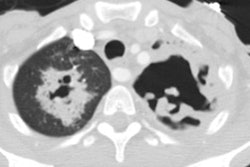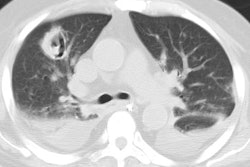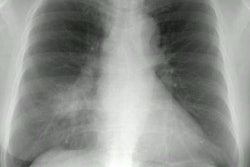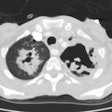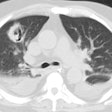Thoracic actinomycosis: CT findings.
Cheon JE, Im JG, Kim MY, Lee JS, Choi GM, Yeon KM
PURPOSE: To characterize computed tomographic (CT) findings of thoracic actinomycosis. MATERIALS AND METHODS: Chest CT scans and radiographs obtained in 22 patients with histopathologically proved thoracic actinomycosis were retrospectively reviewed. All patients were immunocompetent; they were aged 12-73 years (mean, 42.6 years; 14 male, eight female). CT findings were correlated with histopathologic findings in nine patients who underwent surgery (lobectomy [n = 8] or segmental resection [n = 1]). RESULTS: All of the lesions were unilateral, with an average diameter of 6.5 cm (range, 2-12 cm). Patchy air-space consolidation (n = 20) or a mass (n = 2) was seen on CT scans. Fifteen (75%) of the 20 patients with air-space consolidation had central areas of low attenuation (5-30 mm in diameter) within the consolidation. Thirteen of the 15 patients underwent contrast medium-enhanced CT. Ten (77%) of the 13 patients showed ringlike rim enhancement. Adjacent pleural thickening was seen in 16 patients (73%). At histopathologic examination, central low-attenuation areas at CT were seen as microabscesses with sulfur granules or a dilated bronchus that contained inflammatory cells and Actinomyces colonies. Peripheral enhancement of the low-attenuation areas was wall of the microbscess or surrounding parenchyma composed of granulation tissue rich in vascularity. CONCLUSION: Findings of chronic segmental air-space consolidation that contained low-attenuation areas with peripheral enhancement or adjacent pleural thickening at CT were suggestive of thoracic actinomycosis.
